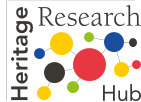Project facts
Presentation
The principal challenge for TANGIBLE was to identify and understand the different types of external causes that affect movable and tangible cultural heritage and need to be controlled to succeed in its safe conservation, preservation and sustainable management. Such identification led to the inspection of the impact of environmental changes on the actual status of preservation.
All these effects on tangible cultural assets necessitated improved methods, technologies and tools for their quantification to achieve more accurate risk assessment diagnosis, documentation, monitoring and conservation of movable cultural assets.
- The project aimed at enforcing the prioritization of the monitoring and conservation policies to ensure sustainable protection;
- It aimed at yielding quicker authentification and traceability of cultural assets, improving management and enhancing the mobility of cultural collections in Europe;
- It aimed at evaluating and tracking the state of preservation on a wide range of cultural heritage objects in indoor and outdoor scenarios;
- The impact of environmental changes has been analyzed, and proper risk parameters have been assessed to ensure their safe conservation and sustainable management;
- The project led to the realization of a toolbox.
Impacts & Results
Results have helped not only the scientific community but especially the cultural institutions and heritage market, delivering affordable solutions in the fields of conservation, documentation and monitoring.
The TANGIBLE output has been made available both as B2G (Business-to-Government) service to be licensed, e.g. to museums, site managers or administrators which needed to perform monitoring and inspections to analyze better their heritages, as well as B2C (Business-to-Consumer) service to be licensed, e.g. to private citizens or professionals for personal uses.
The TANGIBLE objective has been to mobilize the project SMEs towards expanding the heritage market in the direction of continuous and persistent conservation, preservation and monitoring as well as to employ the developed methodology to push things faster and achieve better results.
Banner: Revision and conservation of the Holy Trinity Column in Olomouc (Czech Republic) in 2006. @Wiki Commons
